A Jet Set Fête: Exuberant Objects and Young Collectors at the 69th Winter Show
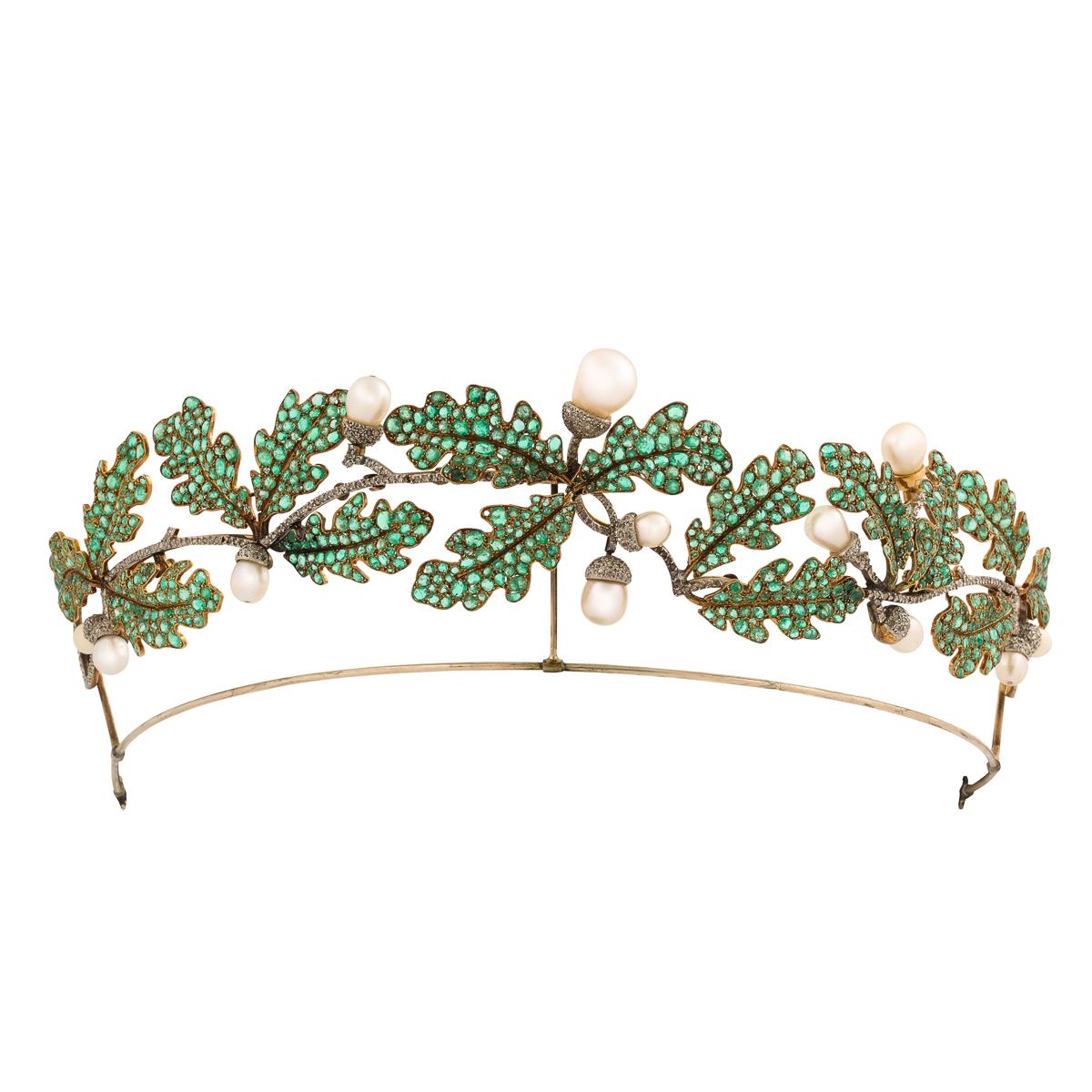
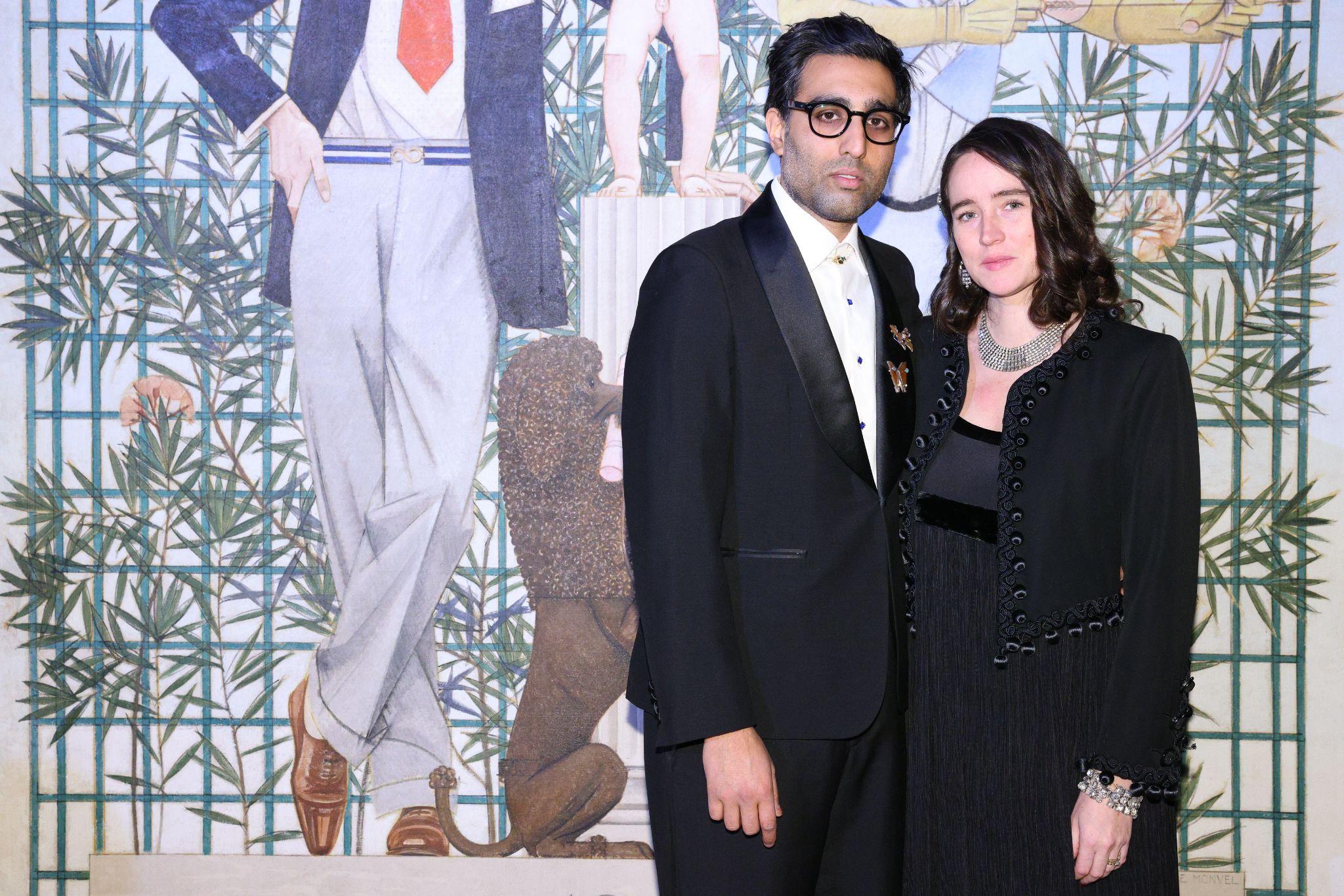
This year dealers and collectors alike are celebrating the return of the 69th edition of The Winter Show to its traditional home at the Park Avenue Armory. This show presents pieces spanning 5,000 years of fine art, decorative art, and design from the top vetted global galleries. No matter which period or style is of most interest to your collecting tastes, one can find many discoveries and marvel at the impeccable craftsmanship that goes into every object.
Thursday marked the show’s yearly benefit Young Collectors Night where fashionably adorned guests gathered to catch up and discuss their favorite new finds. Importantly, proceeds from the event benefit East Side House which brings quality education and resources to residents in the Bronx and Northern Manhattan.
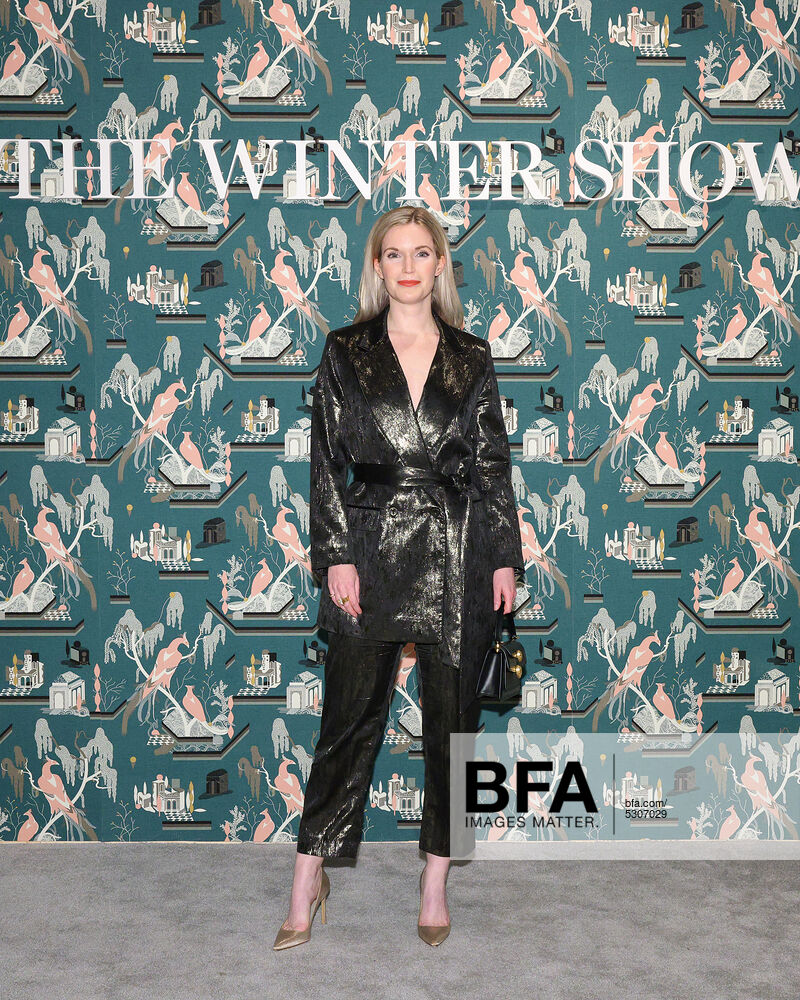
The evening was presented by an extensive committee including Event Co-Chair Laura Day Webb, who also leads patron fundraising for The Immigrant Artist Biennial. She was moved by Charlotte Major Eylie’s mystical painting “The Veiled King Death” at Robert Simon Fine Art (New York). The Benefit Committee is comprised of collectors and dealers alike, as Michael Assis & Bailey Tichenor lead the firm Artistoric as the next generation of luxury porcelain dealers. An object that caught their eye was Yoshio Okada’s “Night-Shining Jewel” Box with Sprinkled Design at Thomsen Gallery (New York).

A new generation of collectors in attendance included Peter Carlisle, who collects 18th and 19th century Americana and European decorative arts. He admired many lovely pieces at Cove Landing and Levy Galleries’s (both New York) booths including a large surrealist pencil drawing by John Sergeant as well as an 18th century coastal Connecticut chest of drawers with an incredible patina and original hardware.
Adams Bode Aujla and her husband Aaron Singh Aujla were the honorees of this jet set fête. Founder of Bode clothing store, Emily has a very strong appreciation for revitalizing the history of textiles into new garments that retain the original character of the materials. While Aaron is a furniture designer and Co-Founder of Green River Project bringing a distinctive flair to mid-century modern infused aesthetic. This design duo represent the next generation of contemporary designers who remain deeply inspired by earlier eras as well as the sustainable approach to giving earlier objects a new life.
This fits with The Winter Show’s mission of bringing together decorative arts dealers and antiquarians from around the world for ten days to honor the quality of exquisite objects; allowing them to discover new chapters in their next home.
Here is a brief look at some highlights that can help continue the evening’s theme well beyond the run of the fair including regal jewels, delicate flutes of bright bubbles, organic drinking vessels, intimate mementos, illuminated manuscripts, and brunch accoutrement.
A La Vieille Russie, New York

Rising to the occasion for any jet set fête, this stunning English tiara is a showstopping addition to any ensemble. This piece is unique for a handful of reasons including the realism of the foliate motif, the dual tone contrast of the leaves set in gold against the acorns and branches set in silver, as well as the emerald stones setting of the leaves allowing for light to fully pass through. This combination of technical precision and creative ingenuity produce a greater illusion of depth to the piece. This level of craftsmanship is extraordinarily rare to find these days from big name luxury jewelers today. The motif may indicate symbolic affinity with the Royal Oak which protected a young King Charles II in 1651 during the Battle of Worcester. Though today these motifs take on additional importance foregrounding the organic beauty of nature as combating climate change and finding ecologically sustainable models for the future are key components of global political conversation of our generation.
MacConnal – Mason, London, UK

Indulging in the delights of the palette is key for any successful event to become memorable. This display of libations and ripe fruit would tantalize the senses and elevate any evening soirée. Rendering the delicacy of each tiny bubble enlivening a full champagne flute resting upon a marble table top, this still life is as magnificent as it is charming. Emilie Preyer has an expert ability to capture light and the notoriously difficult transparency of glass in her practice as a realist painter. Daughter of Dusseldorf school painter Johann Wilhelm Preyer, this female artist was a welcome discovery at The Winter Show in Macconnal Mason Gallery’s centrally located presentation.
Hill-Stone, Dartmouth, MA
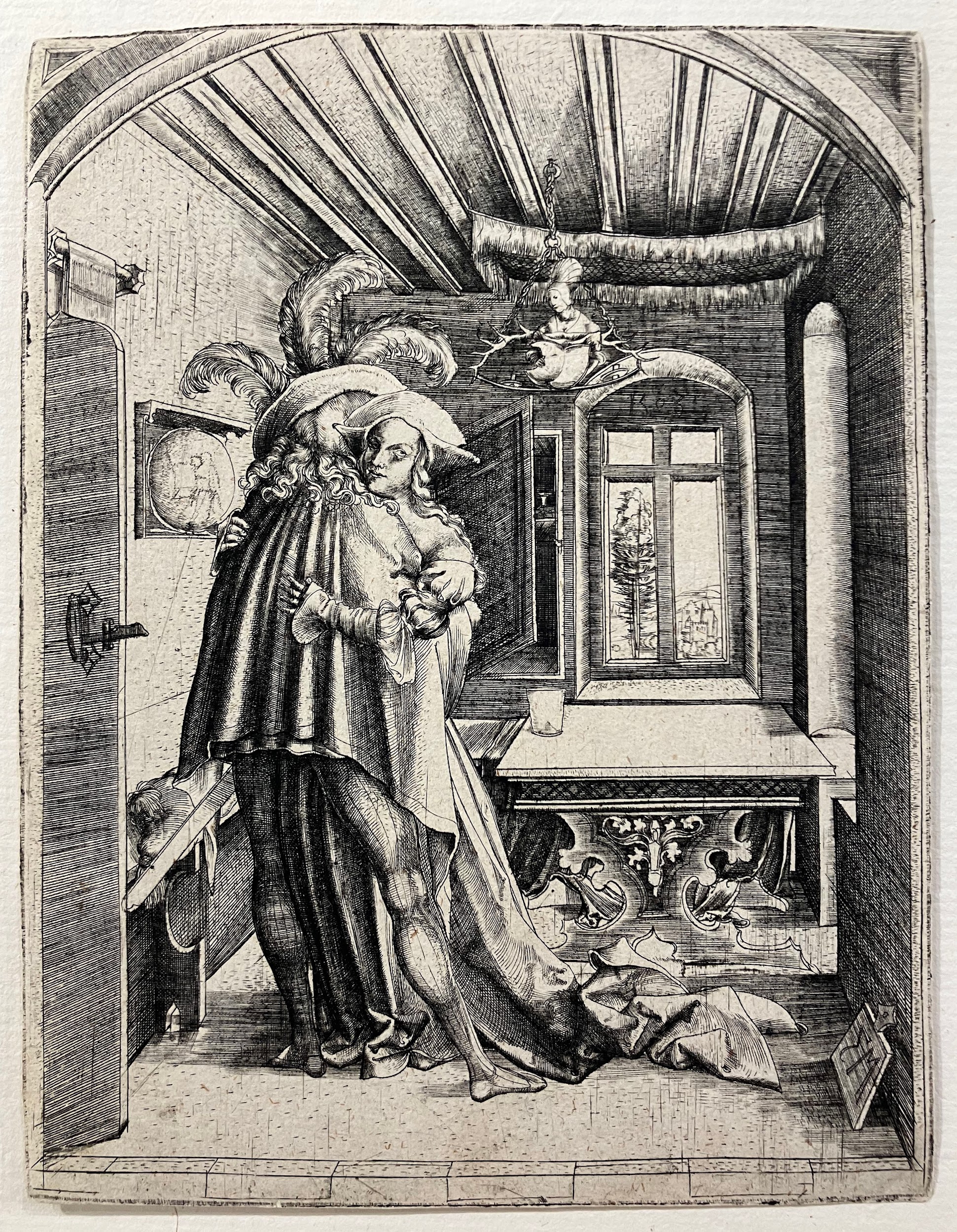
Encapsulating the intimate embrace of two lovers, this enigmatic etching attributed to Master MZ may be the work of Martin Zasinger. Could this be the next morning after having thoroughly celebrated an elegant evening, just before these two part ways in their full regalia? The scene captures the exuberance of garments both form-fitting and elaborate in length with draping tendrils and curving plumage all amplifying this stolen moment alone in each other’s arms. Enticing details in this small space provide additional insight into the scene as she glances towards the blank escutcheons held aloft in the chandelier, perhaps an indication of a desired offer of betrothal. The door latch also has an ambiguity which could be a coiled love note pinned in secrecy to the back on the interior of the space, or reminiscent of knife handle alluding to perhaps malicious whims of a heart swayed by passion.
Les Enluminures, New York, Chicago, and Paris
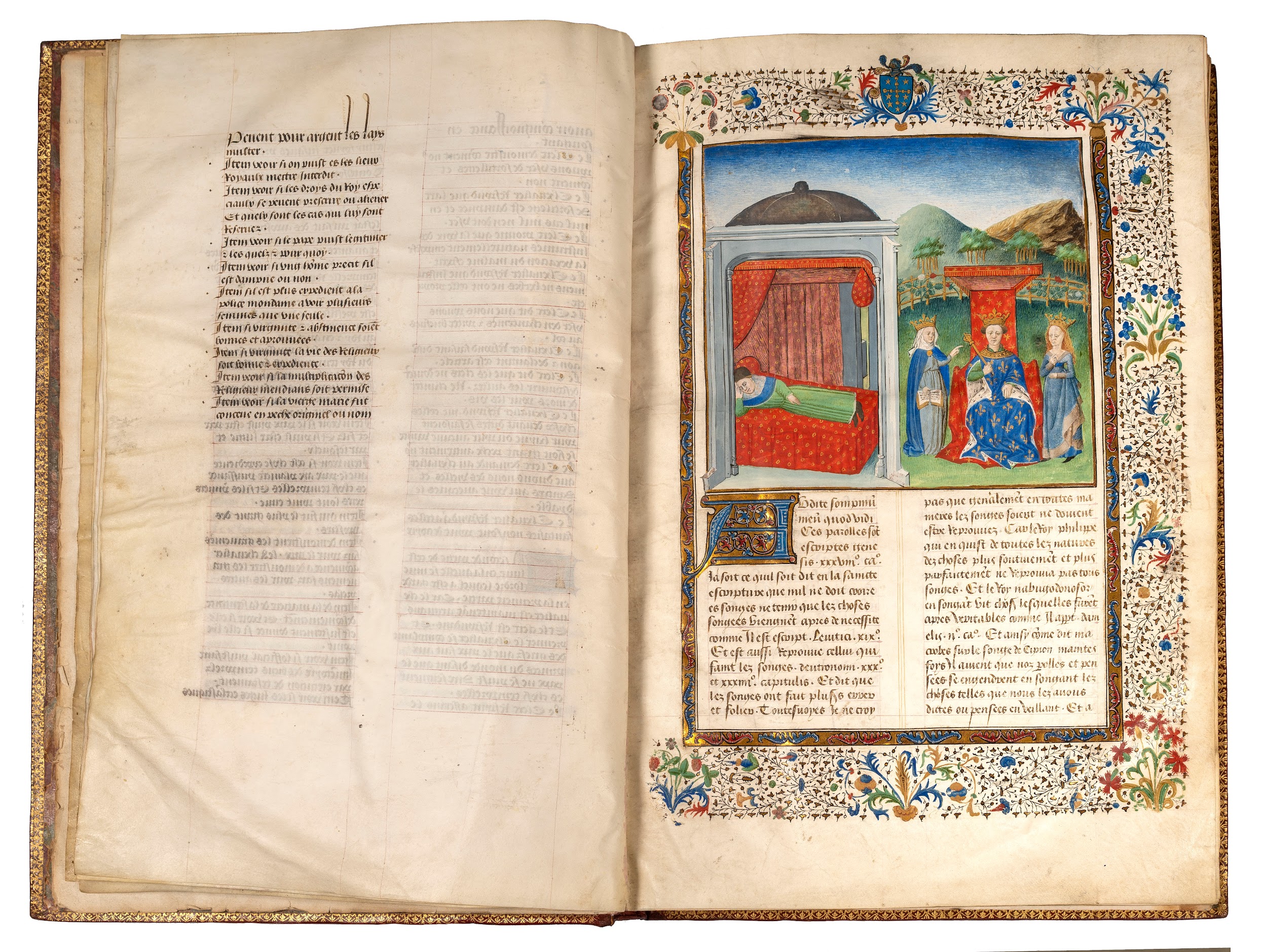
As the celebrants disperse each person returns to their own dwellings to welcomingly greet sweet slumber. If only our bedchambers were as sumptuous as the one depicted in this medieval French illuminated manuscript. The dreamer seen here envisions the balance of Church and State flanking the ermine clad monarch to the right of the scene. The canopy bed of the period would typically be fully curtained with fine textiles, in the most elaborate interiors may be embroidered, and laid with a feather filled mattress and bolster for those who could afford an upscale alternative to straw filling. They were luxury items worthy of itemized inclusion in one’s will to pass down within the family ensuring the comfort and success of their heirs. Though similar in appearance the royal canopy of state held aloft the throne are both in red ground, likely representing a deep velvet, appear to be embroidered with goldwork designs. But the motifs demarcate the important distinction of gilt stars illustrating divine authority reserved solely for enhancing the king, where the author–depicted here dreaming–is surrounded by a repeating design of hollow circles stripped of royal iconography.
H. Blairman & Sons Ltd, London, UK
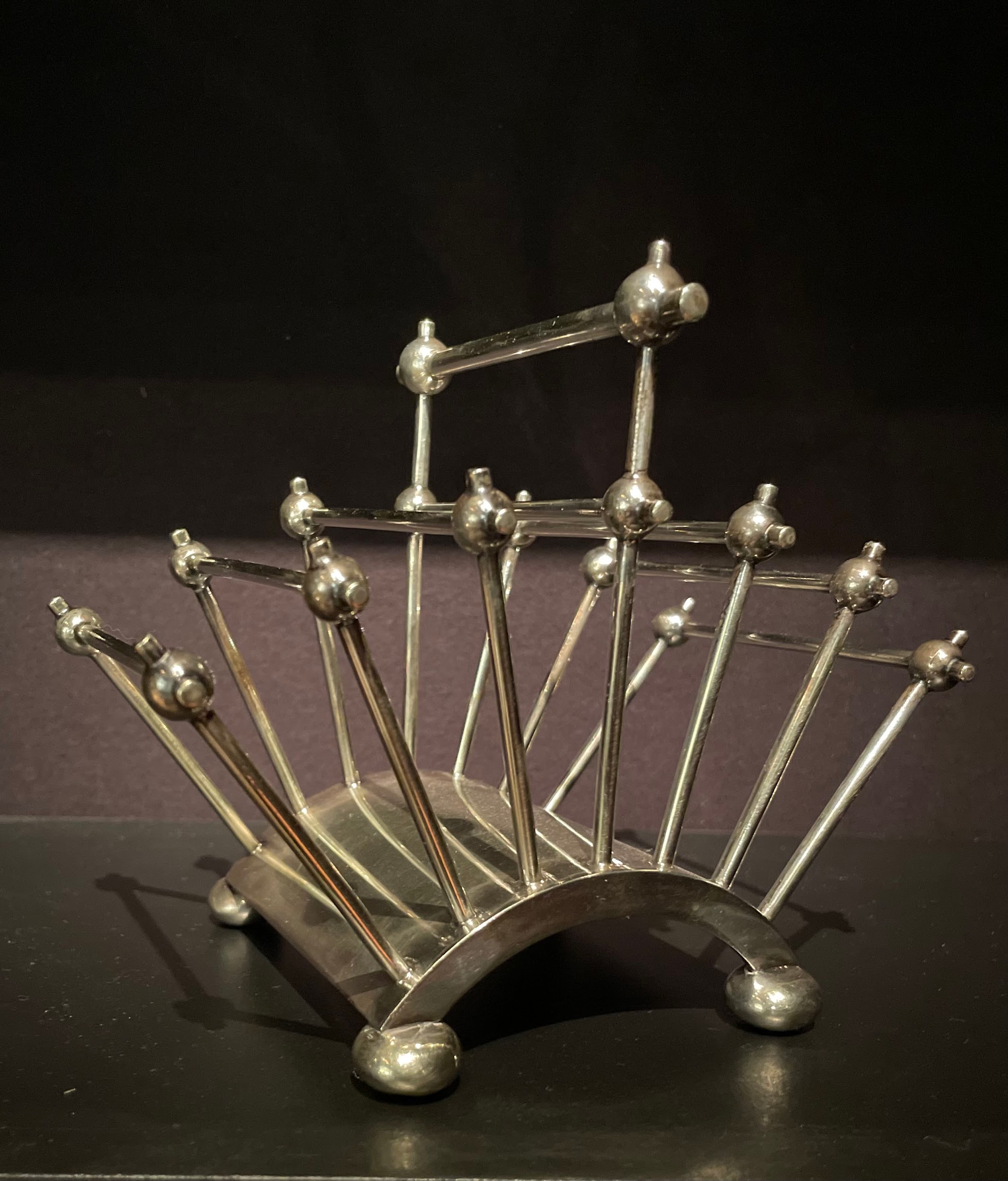
Once the evening festivities draw to a close, the next morning there is nothing like brunch to aid in one’s full recovery. Take the opportunity to dress the table with a lively arrangement of accouterments including this very sleek toast rack by Scottish industrial designer Christopher Dresser. One of the foremost figures in British manufacturing, Dresser championed good design as a form true to the nature of its materials and without excessive ornamentation. This piece was manufactured by Hukin & Heath, a Birmingham based firm, specializing in silver-plating–a novel technology in the period–that made it more accessible for middle income families to acquire quality tableware at a fraction of the price of silver. Now it’s your opportunity to steward an important example of design history within your own home and entertaining repertoire.
You Might Also Like
Exquisite Imitations and Elaborations of Nature at The Salon Art + Design
Reminiscing Bill Cunningham at the Frick’s Young Fellows Ball
What's Your Reaction?
Carson Woś is a researcher, writer, and arts administrator. Her research interests include fiber art, global feminisms, and architectural sustainability, and she is a contributor to Cultbytes and Artspiel. Currently, the Development Officer for The Immigrant Artist Biennial and Partnerships Director at Seminal. Woś has held previous positions at Artnet, Hampton Court Palace, Metropolitan Museum of Art, MoMA PS1, and Creative Capital. Woś holds an MA in Decorative Arts, Design History, and Material Culture from Bard Graduate Center, and an MA (Hons) in Art History from University of St Andrews in Scotland.

